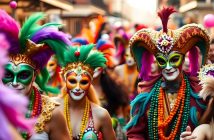In which Alice Payne enjoys a whistlestop journey through this beguiling French island…
Early this morning, I was flying through the sky on a tranquil flight to Corsica. Just a few hours later, I am unpleasantly surprised to find myself flying through the sky again – this time on a speedboat.
As we hurtle across the ocean, with the boat launching itself off huge cresting waves before hovering in mid-air and plunging at alarming angles into the next rising summit of water, I start to regret having put the remote Lotu beach on our itinerary.
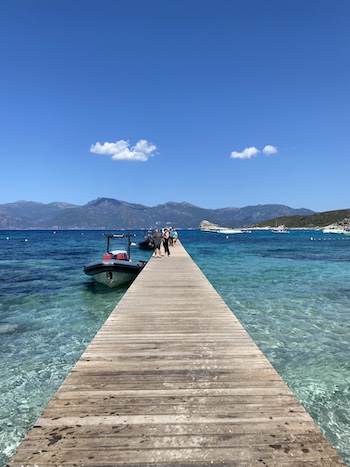 “I…don’t…think…this…is…SAFE!” I shout to my two friends – the only others on this boat rodeo. My words are immediately eaten by the wind, so I focus instead on attempting a rising trot, which seems to be the only thing between me and a holiday marred by back injury. “Next time, I’m taking the ferry,” I mutter. But my regrets evaporate when we eventually pull up to a small wooden jetty surrounded by turquoise sea.
“I…don’t…think…this…is…SAFE!” I shout to my two friends – the only others on this boat rodeo. My words are immediately eaten by the wind, so I focus instead on attempting a rising trot, which seems to be the only thing between me and a holiday marred by back injury. “Next time, I’m taking the ferry,” I mutter. But my regrets evaporate when we eventually pull up to a small wooden jetty surrounded by turquoise sea.
Lotu is inaccessible by car and the dock is the only manmade structure for miles around. As I step onto its low slats, translucent water laps against the wood so gently I can see straight to the white sand below, where sunlight pirouettes along the seabed.
The beach is a wide crescent of powder-white sand sloping into peaceful sea that changes in stages like a Rothko painting from pale teal to vivid aquamarine and, further out, deep blue, where a handful of visiting boats bob. Behind the beach a fringe of maquis – the fragrant green shrubbery that coats Corsica – slopes up into hills. Unexpectedly, there are also wild cows and a bull lounging at intervals along the sand and the whole effect is rather magical, like stumbling across an untouched land. Fortunately the experience is made even better by a smoother boatride back to Saint Florent…this time with the tide.
Corsica is called the ‘Ile de Beauté’ for good reason. Despite being twice the size of Mallorca it’s remarkably unspoilt with no high-rise buildings or tourist complexes in sight. Mountains cover two-thirds of the island offering gorgeous backdrops and vertiginous trails, and as the roads wind from one idyllic beach to the next it’s hard to find an unscenic view.
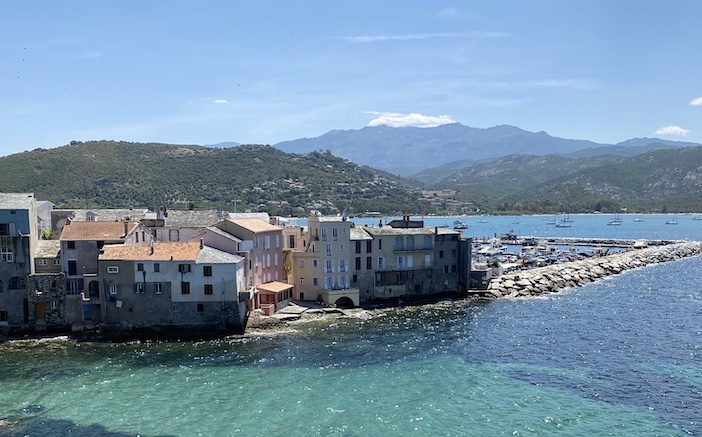
Our trip starts in the island’s north which is quieter than the south with smaller towns, less populated beaches and a more local feel.
After gratefully dismounting the speedboat, we drive through olive groves to the medieval village of Pigna and tuck into wild boar stew while evening sun turns the hills around us dusky pink. Under moonlight, we explore Pigna’s narrow stone passageways as traces of sunset linger on the distant coastline. In this atmospheric setting, the island’s history feels tantalisingly present.
Located between Italy and France, Corsica has been commandeered by everyone from the ancient Greeks and Romans to the Genoese, French and Brits, with nationalist uprisings in between. It’s the birthplace of Napoleon, Pascal Paoli and possibly Columbus, and its tumultuous past is evident in its architecture, as coastal towns spill from citadels and fortified villages speckle the hills.
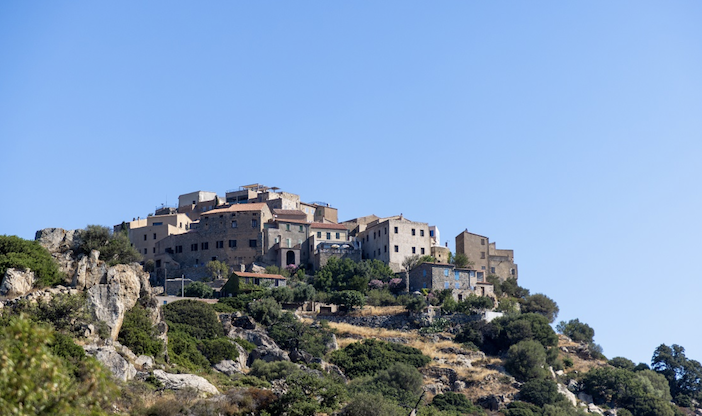
Sant’Antonino (photo courtesy of Corsica Tourism)
Intrigued by the latter, we head to Sant’Antonino, voted one of ‘Les Plus Beaux Villages de France’. Perched 500 metres above sea-level and dating back to the 9th Century, the pedestrian village blends into the rocks from which it’s hewn. If its uninterrupted sea views aren’t enticement enough to enter, the smell of freshly-baked chestnut cakes wafting from the bakery will be. Cake in hand, we scale the uneven steps and pass miniature courtyards until we’re rewarded by staggering 360-degree views of the island.
The next morning we wake in the north-west coastal town of Calvi and head to the beach, skipping Calvi’s three-mile bay in favour of Plage de Sainte-Restitude, a small sandy cove with water so warm and still we float in it for hours.
Calvi is a vibrant town rich with history, charm and plenty to do; not least strolling its palm-fronted marina under the citadel, passing al fresco diners and locals drinking wine from their balconies. Like so much of Corsica, the marina is ensconced in spectacular scenery, and the experience of dining by the water – eating fresh grilled fish while gazing across the bay at snow-capped mountains – is exceptional.
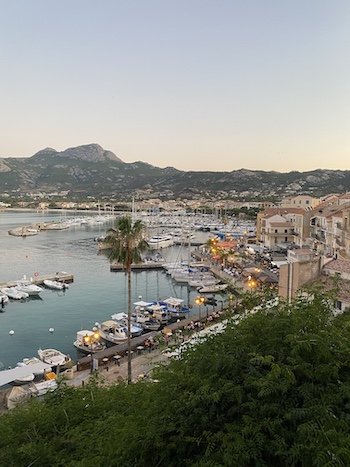 Once sated, the faded citadel calls and we wander its labyrinth before watching the sun sink below the sea. But it’s as we descend that I stop in my tracks: Calvi’s jagged marina is now aglow in gold, lit up by boat and restaurant lights. Behind it, the black outline of mountains seems painted onto the indigo sky. A postcard couldn’t do it justice.
Once sated, the faded citadel calls and we wander its labyrinth before watching the sun sink below the sea. But it’s as we descend that I stop in my tracks: Calvi’s jagged marina is now aglow in gold, lit up by boat and restaurant lights. Behind it, the black outline of mountains seems painted onto the indigo sky. A postcard couldn’t do it justice.
We reluctantly leave the north and venture south, breaking up the drive with a stop along the Solenzara River where we join a handful of people relaxing in a gorge. I swim over to a smooth boulder and lie on it in the sun. A baby bird calls occasionally from its forest nest nearby. By the shore, a woman sits in shallow water reading a book, while behind me a man climbs and dives off tree-sprouting rocks. I feel mesmerised by this idyllic hideaway and could stay for longer, sensing it might be the most meditative experience of our trip. But Porto Vecchio beckons.
Our serenity dissipates sooner than expected as we approach the glamorous harbour town and try to charge our car. Corsica is keen to promote electric vehicles, but its infrastructure hasn’t caught up. A testing hour ensues as we have numerous false starts with chargers and eventually plug in at a supermarket carpark that feels the opposite of glamorous, before arriving in darkness to our Airbnb in the hills.
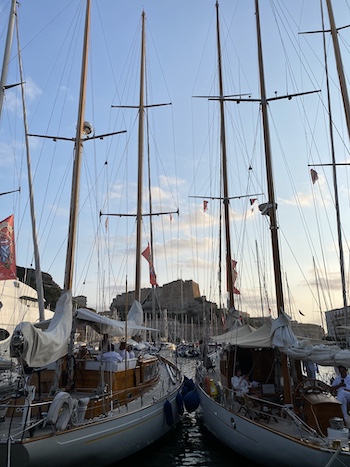 The next morning, breakfasting beside the pool to birdsong and scouring the horizon for Sicily, our good humour is restored and we set off to Santa Giulia – a wide, azure bay buzzing with watersports, restaurants and cabanas. Later, we venture into Bonifacio, the south’s second largest town and a popular destination for yachts.
The next morning, breakfasting beside the pool to birdsong and scouring the horizon for Sicily, our good humour is restored and we set off to Santa Giulia – a wide, azure bay buzzing with watersports, restaurants and cabanas. Later, we venture into Bonifacio, the south’s second largest town and a popular destination for yachts.
Bonifacio looks unlike anywhere I’ve been before. Its marina is a long sliver between white, limestone cliffs, upon which a large citadel looks imperiously out to sea. It is said to be from these cliffs that giants pelted Odysseus’s boats with rocks. In the centuries since, the cliff sides have been sculpted into striking undulations as though gently combed by fingers, making me wonder whether those giants were real after all.
Another day, another beach, and this time it’s the horseshoe-shaped Rondinara, set between sleepy ochre hills. Like Santa Giulia, its popularity is in contrast to Lotu’s northern wilderness, but the lively bay offers a different experience of Corsica and still feels roomy compared to other Mediterranean hotspots.
We return to Porto Vecchio to find dinner and, of course, a charger, which serendipitously leads us to the boutique Casa Santini x Roc Seven hotel and its perfectly manicured sea garden. “This grass could be Australian!” marvels my Australian friend as we cradle artisan cocktails. Looking out across the peaceful inlet, I think the view looks more Nordic in its green and blue simplicity, but further landscaping discussions are cut short as we’re led to our table and an octopus tentacle that looks like art is placed before me. I’m not sure we could have found a better dinner, or view.
At the airport the next day, I wonder why Corsica isn’t more popular with Brits. With scenery as beguiling as its history, and an abundance of nature, activities and cuisine, the island has so much to offer. In fact, our trip feels like it’s ending too soon, and as we wait for our plane home, I realise I’d much rather be re-boarding that speedboat.
To explore Corsica further, including ‘5 (very good) reasons to come to Corsica’, visit the official tourism website at www.visit-corsica.com.
Photos by the author. Header image: View from Sant’Antonino by Paul Martinez




